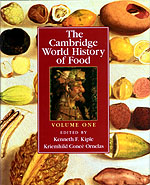
Home
|
Seaweed
(Japanese foods in history)
|
|
|
Seaweeds - or more appetizingly, "sea vegetables" - consist of certain species of marine algae such as kelp, rockweed, gulfweed, and laver. When such algae are fresh, their taste is that of salty greens; when they are dried, however, the taste is just salty. Although (save for some people in the British Isles) Westerners from the time of the ancient Greeks have steadfastly ignored seaweed as a food, the Japanese have long appreciated it. They use kelp such as nori (in English, "laver" - Porphyra laciniata, P. tenera, and P. umbilicalis) for wrapping sushi; kombu (Laminaria japonica - known as giant sea kelp) for broths and stocks and for wrapping dried fish; wakame (Undaria pinnatifida) for soups and salads, and to sprinkle over rice dishes; hijiki (Cystophyllum fusiforme) for sauteing as well as deep-frying tempura; and agar as an agent for jelling. In the West, "Irish moss," or carrageen, is a seaweed that is the source of carrageenin and is instrumental in thickening salad oils, cottage cheese, and the like. Laver has been traditionally cooked into flatcakes (laverbread) by the Irish, and green laver is used as a cooked vegetable. In the past in the United States, one kind of edible kelp was called "bladder weed" because of its streamer-like leaves (or "giant bladder weed" when the streamers averaged 30 to 40 or more feet in length). Depending on the variety, seaweed can be high in beta-carotene and vitamin C, and all types are packed with a host of minerals. |
Publication information
Excerpted from The Cambridge World History of Food Copyright Cambridge University Press 2000 This book is in copyright. Subject to statutory exception and to the provisions of relevant collective licensing agreements, no reproduction of any part may take place without the written permission of Cambridge University Press. ISBN 0 521 40216 6 1,958 pages
Shopping |
|
|
Home
Tokyo area
Kyoto
Osaka/Kobe
Japanese Cuisines
The Food Gallery
“ú–{Œê
Search Maps Mobile Web tools About Privacy | ||